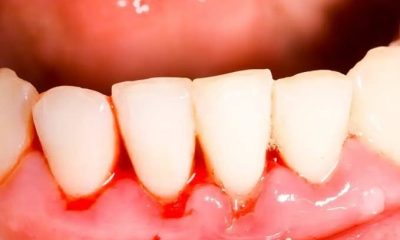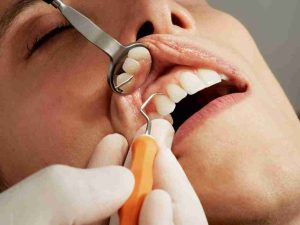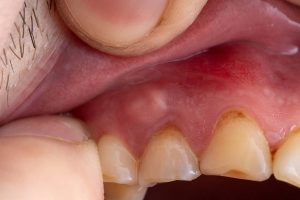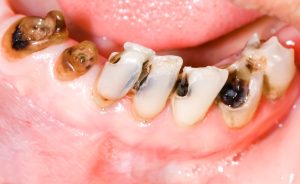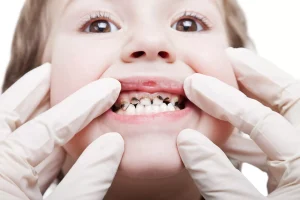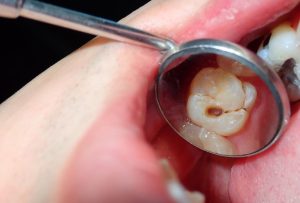
CAUSES OF CAVITIES
Causes of cavities. Cavities are areas of dental decay or holes that develop on the surface of your teeth. Poor dental hygiene, consuming a lot of sugary snacks, and plaque accumulation are some of the causes. Dental fillings, root canal therapy, and tooth extraction are among the available treatments.
CAUSES OF CAVITIES
Your chances of a predictable outcome and good dental health increase with the timing of cavity treatment. A cavity is a hole created by decay in the tooth. Cavities develop when the enamel, the tooth’s hard outer coating, is eroded by oral acids. A cavity can happen to anyone. Cavities can be avoided with frequent dental cleanings and good oral hygiene. Dental caries is another term for cavities in teeth.
Types
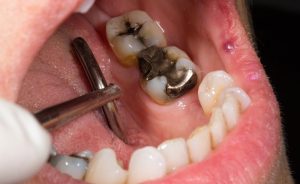
Any tooth surface can become the site of a cavity. The following list includes common cavity types and their locations: Smooth surface: Tooth enamel is dissolved by this slowly expanding void. Maintaining good dental hygiene might help you avoid it and occasionally even reverse it. This type of inter-tooth decay is common in people in their 20s. Pit and fissure decay: Cavities develop on the upper portion of the chewing surface of your tooth. The front aspect of your back teeth may also be affected by decay. Pit and fissure deterioration usually begins in adolescence and advances rapidly. Root decay: Root decay is more common in adults whose gums are receding. Your teeth’s roots are exposed to acid and plaque due to gum recession. It is challenging to prevent and treat root decay.
Symptoms
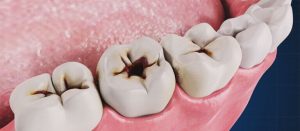
Usually, there is no pain or other symptoms associated with tooth decay on the outer enamel surface. As decay spreads from the enamel to the dentin and pulp, you’re more likely to notice symptoms. Symptoms of cavities include: A unpleasant taste in your mouth or foul breath. indications of gum disease, such as bleeding gums. puffiness of the face. Mouth pain or toothache. sensitivity of the teeth to hot or cold food or beverages.
Causes
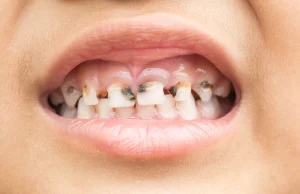
Cavities emerge as a result of numerous reasons. This is how it operates: Fruit, sweets, bread, cereal, sodas, juice, and milk are among the sugary, starchy foods and beverages that bacteria in your mouth prefer to consume. These carbohydrates are changed into acids by the bacteria. Dental plaque is a mixture of saliva, food, acid, and bacteria. Your teeth are coated in this sticky material. Cavities, or holes, are formed in the enamel surface when acids in plaque dissolve it due to improper brushing and flossing.
Treatment

The severity of your tooth decay will determine how it is treated. Treatments for cavities include: Fluoride. Fillings. root canal treatment. extraction of teeth. Fluoride Remineralization is the process by which fluoride treatments restore damaged enamel in the very early stages of tooth decay. Early cavities can be reversed in this way. In addition to fluoride treatments at the dentist office, you might require prescription toothpaste and mouthwash. Dental fillings A dentist drills out the rotten tissue and plugs the hole in your tooth once it has formed. Dental fillings are made of gold, silver amalgam, or composite resin, which is a substance that resembles tooth.
Prevention

Also, Plaque, acids, and germs that cause cavities can be eliminated with good dental hygiene, which includes brushing and flossing on a regular basis. Maintaining healthy teeth and gums involves: using fluoride toothpaste and a soft bristled brush to clean your teeth at least twice a day, ideally after each meal. reducing consumption of starchy, sugary meals and beverages. To remove food particles and plaque from in between your teeth, floss every day. at least twice a year for dental exams
Summary
Going to the dentist can be stressful, particularly if you’re unsure of what to expect. However, you can lessen your fear of going in the dental chair by starting treatment with a trusted practitioner. Your dentist will provide you brushing and flossing advice that will help you prevent cavities and maintain your smile for many years to come.

 Health3 weeks ago
Health3 weeks ago
 pregnancy3 weeks ago
pregnancy3 weeks ago
 Food3 weeks ago
Food3 weeks ago
 Health2 weeks ago
Health2 weeks ago







